Keep a stack of (indices of) non-increasing values. So before appending the new value, pop smaller ones. Whenever you pop one, add its contribution to the total.
def solution(arr):
arr.append(float('inf'))
I = [-1]
total = 0
for i in range(len(arr)):
while arr[i] > arr[I[-1]]:
j = I.pop()
a = j - I[-1]
b = i - j
total += (a+b)*a*b//2 * arr[j]
I.append(i)
arr.pop()
return total

The bars represent values, larger values are larger bars. The value at i is about to be added. The light grey ones come later. The green ones are on the stack. The brown ones already don't play a role anymore. First the one at i-1 gets popped, but that's less informative. Then the one at j gets popped. It dominates the range between I[-1] and i: it's the maximum in all subarrays in that range that contain it. These subarrays contain j as well as 0 to a-1 more elements to the left and 0 to b-1 more elements to the right. That's a*b subarrays and their average length is (a+b)/2.
I temporarily append infinity to the values so it works as a sentinel on the left (avoids an extra check in the while condition) and as a cleaner at the end (it causes all remaining values to get popped from the stack). Non-Python-coders: Python supports negative indexes, -1 means "last element" (1st from the end).
Correctness test with random lists of 500 values (Try it online!):
import random
def reference(arr):
n = len(arr)
return sum(max(arr[L : R+1]) * (R - (L-1))
for L in range(n)
for R in range(L, n))
for _ in range(5):
arr = random.choices(range(10000), k=500)
expect = reference(arr)
result = solution(arr)
print(result == expect, result)
Sample output (results for five lists, True means it's correct):
True 207276773131
True 208127393653
True 208653950227
True 208073567605
True 206924015682

